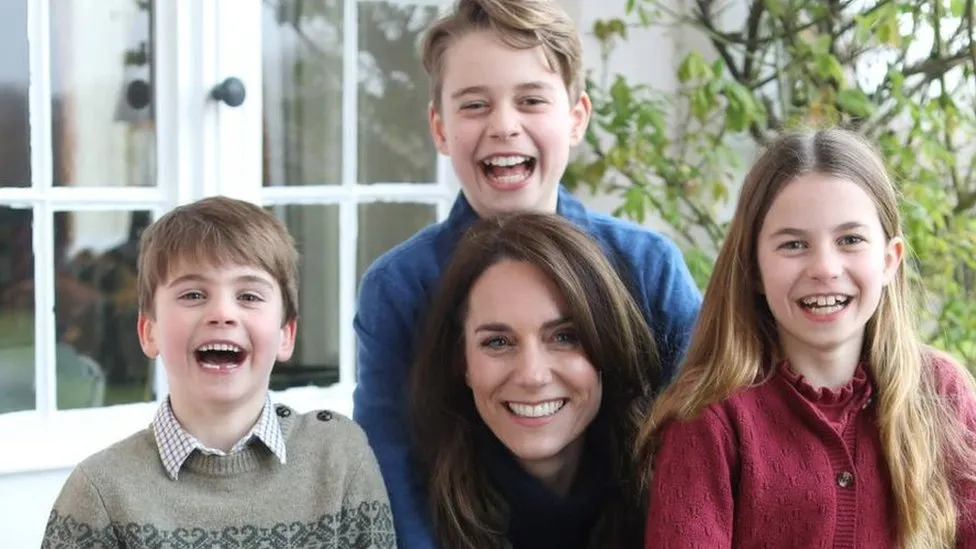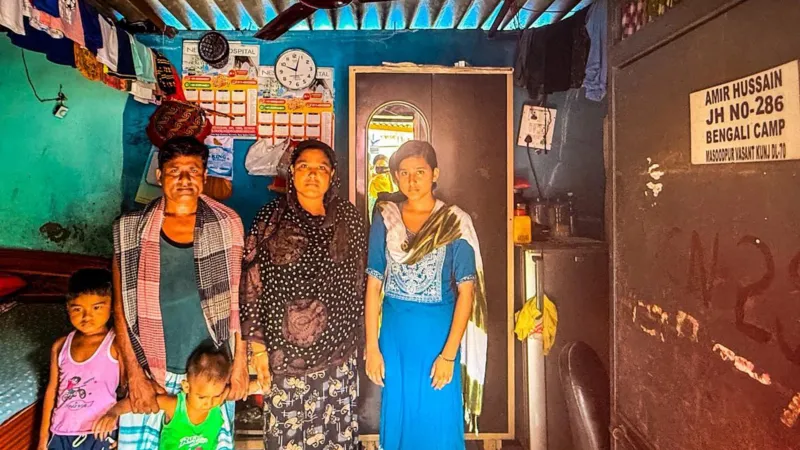Can royals move on from Kate photo media storm?
If you cover royal stories, you will be familiar with an all-too-common conversation. People will say they have zero interest in what's being said about the royals - and then they'll talk for ages, in excessive detail, about what they think about the latest royal news frenzy.

And then they'll say, again, that no one is really interested, or the royals should be left alone; and then talk about all the wild assertions they've seen on social media, and the in-depth articles they've read about them.
In the middle of that maelstrom is the Princess of Wales and her "minor adjustments" to a family photograph.
What was meant to be a cosy Mother's Day picture ended up being blocked by aggressive "kill notices" from photo agencies.
Undeniably, it's got people talking. Who knew that everyone on X, formerly Twitter, was an expert in digital image technology? Was it Photoshopped? Was it a composite of several pictures? Does it matter anyway?
The scale of the online traffic suggests it does matter to many people. For a photograph that has been "killed", it's having a remarkable afterlife. By now it must be one of the most famous images on the planet.
There are editorials - including on Tuesday's front page of the Sun - saying the story has gone far enough, but there are other viewpoints, including those of former Sun editor David Yelland, talking about how much more serious this could still get.
"I sort of don't want to say this, but I will anyway... I think Kate's one step away from a really major reputational problem here - for example, if the original photo is nothing like the photo we saw," Mr Yelland told BBC Radio 4's Today programme.
The big risk, says the former tabloid editor, is if the original picture is leaked and reveals much more than a merely cosmetic tweak.
"It'd take a long time for her to get over that," said Mr Yelland.
The position from Kensington Palace remains that they won't be releasing the original photo, nor are there any further details of what the "experiment" in photo-editing might have altered.
It follows a very familiar media approach from the palaces regarding major stories - to release a limited amount of information, usually with some ambiguity involved, and then say, more or less, nothing more.
It was the approach also used to announce the King's cancer diagnosis and the Princess of Wales's surgery.
And it might be in tune with public opinion, as a YouGov survey on Monday showed 49% agree the right amount of information has been revealed, compared with 20% who think more should have been shared, with others uncertain.
In the wake of the Mother's Day photograph row, there was a brief acknowledgement on social media that Catherine had edited the picture and an apology for the confusion. Nothing more.
Such has been the media storm that it's almost gone unnoticed how unusual it was to have a senior royal saying sorry. That was a big step. It also appeared to put all the blame on Catherine.
The background for this carefully-planned, spontaneous-looking family photo was Catherine's long absence from public events, as she recovers from an unspecified abdominal surgery.
This was going to be the first authorised image of the princess - a family-friendly intervention, sweeping away the paparazzi images that had begun to appear.
Those paparazzi pictures were not used in the UK press, but were widely published in the United States and on social media.
That means in the US people will be looking at those unconfirmed paparazzi pictures and comparing them with this latest, officially released picture.
From the palace's perspective, it doesn't help that we're in a climate of suspicion about what we're shown. It's a very 2024 story. The world of misinformation is awash with fakery and doubt. It's not territory which the royals want to join.
Millennial royals
It's also a major misunderstanding to think that the Prince and Princess of Wales are out of touch with these kinds of conversations or modern media. They are millennial royals.
They are surrounded by smart, switched-on advisers. It's a PR operation known for its slickness, not its slip-ups.
So they will find a way out of the corner into which they've Photoshopped themselves.
It might need a self-deprecating joke to deflect certain questions and release the tension. Or maybe we'll see Catherine again soon, in a way that's less likely to raise problems.
It might also raise questions about what people should realistically expect from the royals.
Maybe there's a need for more honesty on both sides. The front pages have wanted a silent, flawless Kate, but there's also Catherine, a woman recovering from illness, with real-life issues. How is she meant to look?
But all this isn't necessarily going to go away, says Simon Lewis, a former palace communications head.
"I always think royal crises are like great big crashing waves - they come over you, you get up, you shake yourself down and then you just wonder whether another wave is coming," says Mr Lewis.
"And I think, because it's so global, I wouldn't be surprised if there was another wave coming."
-bbc







